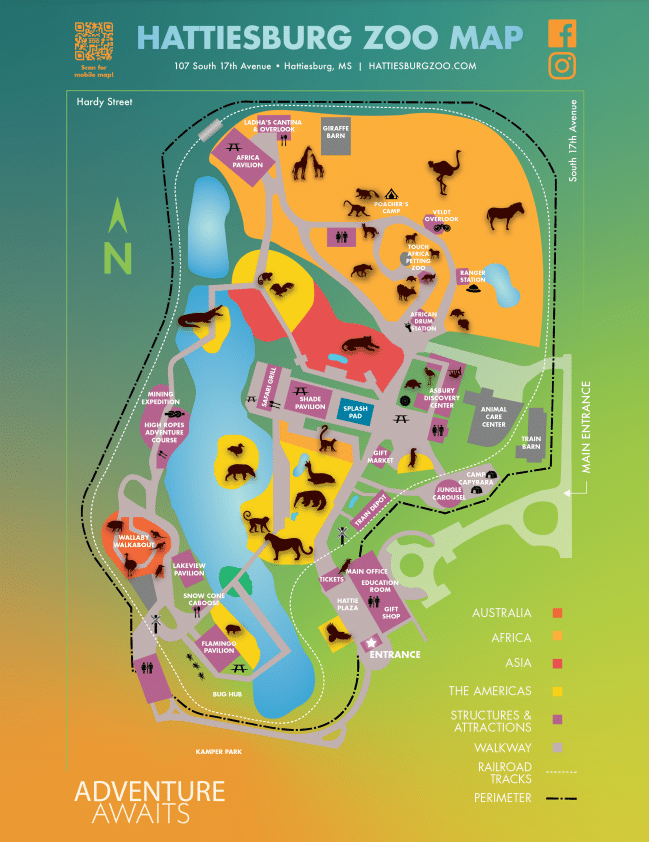Hattiesburg Zoo Map and Brochure (2021 – 2023)
Location: Hattiesburg, Mississippi
Years Active: 1950 – Active
Hattiesburg Zoo is a place of secrets. It’s been around for ages, and those winding paths hold stories you won’t find in any guidebook. This isn’t about perfectly manicured exhibits – it’s about finding the hidden wonders.
The animals here are a mixed bag. Some are zoo classics, others a little more unusual. But they all have personality – the squabbling parrots, the otters that seem to be playing tag, the tortoises with faces like ancient maps.
Ditch the map. Wander the side paths and see what you stumble upon.
Look up, down, and all around. There are cool details everywhere, from old signs to animal hideaways.
Don’t be afraid to ask questions. The keepers here are passionate and might let you in on a few secrets.
Hattiesburg Zoo is like a treasure hunt. It rewards curiosity and those who want a zoo experience that feels like their own little adventure.
What is the history of the Hattiesburg Zoo?
The Hattiesburg Zoo, located in Hattiesburg, Mississippi, has a rich history dating back to its establishment in 1950. Originally known as the Kamper Park Zoo, it started as a modest collection of animals within Kamper Park. Over the years, the zoo has undergone significant transformations and expansions. In 2000, it was officially renamed the Hattiesburg Zoo and moved to its current 12-acre location, allowing for more extensive exhibits and enhanced animal care facilities. Today, it continues to grow, offering educational programs, conservation initiatives, and an exciting array of wildlife for visitors to enjoy.
What kind of animals are at the Hattiesburg Zoo?
The Hattiesburg Zoo is home to a diverse range of animals from various regions of the world. Visitors can explore exhibits featuring animals such as African lions, giraffes, red pandas, alligators, macaws, and many more. The zoo places a strong emphasis on conservation and education, offering opportunities for guests to learn about the natural habitats and behaviors of these animals. Additionally, it actively participates in breeding programs for endangered species, contributing to global efforts to preserve biodiversity and protect wildlife.


